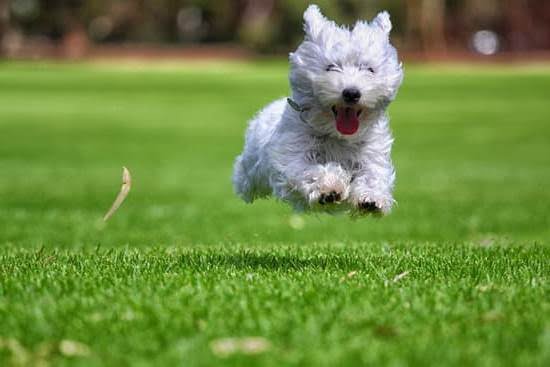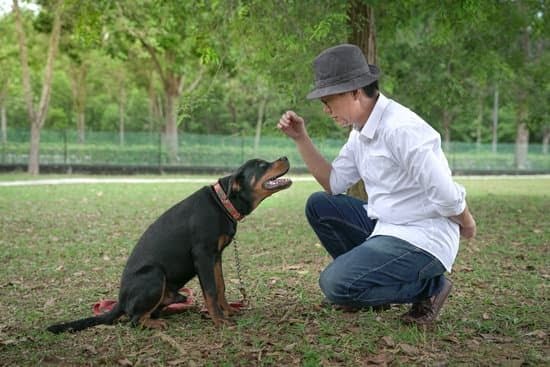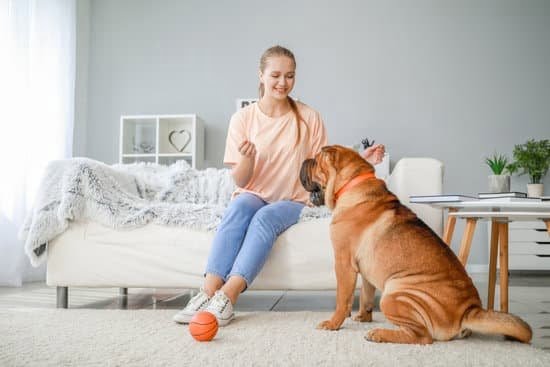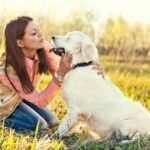Introduction
Potty training your dog isn’t always easy and requires careful observation, patience, and consistency. But the benefits to having a house-trained dog are immense. Not only does it make life more comfortable for you (less accidents to clean up!) but it also makes life more manageable for the pup—house training gives boundaries that keep them feeling secure and respected. Additionally, this respectful relationship creates a deeper bond between you and your pup and eliminates stress related to pottying in the wrong spot. Furthermore, it’s safer as they learn where they can and cannot go when taken out on public walks or protecting your house from unwelcome orders while guests visit. All these elements combined can benefit both owner and puppy in numerous ways.
Preparation
Before you get started potty training your dog, there are a few items you should have on hand. You will need to invest in puppy training pads (also called pee pads). These pads give your pet an adequate toilet surface that they cannot miss. Make sure they are easily accessible to your dog. You can also purchase a crate and or gate to help with the process. This helps to keep the pup confined so that they don’t go anywhere else in the house, plus most dogs won’t do their business where they rest or sleep. Finally, it is a good idea to have access to treats for rewarding good behavior.
In addition to these supplies, it is also important to pick and designate an outdoor spot as the bathroom area for your pup when taking him outside for walks or potty breaks during his training period. Once this spot has been found, bring several of those same puppy pads outside and lay them down on said designated spot and this will help your dog become accustomed that this is okay place for relieving himself outdoors as well.
Selecting an Ideal Potty Spot
Finding an ideal potty spot for your dog is the foundation of an effective potty training process. It’s important to consider your pet’s personality, size, and activity level when making this selection. If you live in a high-traffic area, it may make sense to pick a spot that’s not visible from the street or sidewalk. You may also want to select a cleaner surface such as grass or bricks instead of concrete or dirt; this will help protect your dog’s paws from any irritants that may be present on the ground. Also be sure to avoid selecting an area near plants and shrubbery; dogs have a natural instinct to avoid urinating where they sleep or eat so pretending they are “marking their territory” should be avoided all together. Additionally, choose a romantic spot, like a tree in the park, if it fits better within your routine; this makes learning the new skill more exciting for both you and your pup. Finally, no matter what place you choose, be sure to use positive reinforcement when encouraging good behavior so that your pup associates going potty with being rewarded.
Training and Positive Reinforcement
When potty training your dog, it’s important to use positive reinforcement. Positive reinforcement encourages positive behavior by rewarding desired behavior with rewards such as treats and verbal praise. During the initial stages of potty training, you’ll want to reward your pup for going in the correct spot (outside) and praising them for success. If they have an accident during the process, simply adjust the schedule and ensure that you are providing them with ample opportunities to go outside every hour or so. Over time they will learn their new routine and will begin to understand that they need to go outside to do their business. You can use specific cues such as “go potty” when taking them out each time so that they associate that phrase with going outside. Once your dog has learned the potty routine and goes in the appropriate spot, it is important to continue providing rewards to reinforce this desired behavior.
Establish Habits Around Feeding & Drinking
One of the most important steps when it comes to potty training a dog is establishing habits around feeding and drinking. It’s important to establish a schedule for feedings, as well as regular times for walks, and potty breaks. Be sure to feed your dog at the same time each day, and make sure they have access to plenty of clean water during the day. After meals, it’s important to take them on a walk or a potty break—be consistent in this process so that your dog understands that you are expecting certain behaviors from them. If possible set aside specific times of the day for walks and potty breaks (e.g., shortly after meals). Go outside with your dog every time so you can reward them for good bathroom habits. Once your dog associates going outside with positive reinforcement, they will quickly start using the bathroom outside when taken out.
Creating a Potty Routine
Creating a potty routine for your new pup helps them understand when and where it is appropriate to go to the bathroom. As you bond with your new pet, use verbal cues or gentle tugs on the leash to bring them to the designated spot outside. Once they have relieved themselves, give them praise and maybe a treat as reinforcement so they can link the reward to going potty in that area. You may also choose to create a schedule for meals, outdoor potty trips and playtime. Establishing this routine helps keep dogs on track as they learn appropriate potty behaviors. Additionally, prohibiting your dog from having access to certain areas inside of your home will decrease the chances of any accidents. Have patience – house training is not an overnight activity but rather an educational process that requires time and effort from both pet and owner.
Watch for Common Potty Cues
In order to successfully potty train a dog, it is important to be able to recognize potential potty cues. To get ahead of any “accidents” and effectively housebreak your pup, pay attention for the following: Sniffing or Pawing at Floor – When your pup starts smelling around or pawing at the floor, this is a signal that he might need to use the bathroom. It may also help encourage him to go in a specific area if you lead him there each time.
Staring at You Intently – A pet dog looking up at its owner with an intense gaze can indicate that it’s time for the pup to go outside. Other signs include barking, scratching, whining and even walking in circles.
Rapid Tail Wagging – Rapidly wagging tails often mean excitement but they can also mean your pup is physically uncomfortable and needs to do their business soon. Watch out for their body language and consider taking them out right away if you think your dog is communicating as such.
Increased Fidgetting – If your pup starts acting fidgety or antsy by jumping around more than usual, they may have just realized they have to pee (or poop). Instead of scolding them try running through the door so they can go outside quickly.
Appropriate Clean Up After Accidents
When potty training a dog, it is important to properly clean up after any accidents. This helps the dog to understand that eliminating inside the house is not acceptable. Cleaning up completely, using an enzymatic cleaner that helps to break down and remove pet urine and feces odors, will help prevent your pet from returning to the same area again. Make sure to use absorbent rags and paper towels to blot up as much of the mess as possible and then follow up with an appropriate cleaner safe for use around pets. When finished cleaning, spray the area with an odor neutralizing product or vinegar solution diluted in water to further deter your pet from returning. Additionally, use creative methods like double-sided tape or plastic mats in the affected area as repellent measures against further accidents in those areas in the future.
Troubleshooting Common Problems
To successfully potty train your dog, there are a few common issues you’ll want to look out for. The first is ensuring that your pet creates a specific spot to do her business, since animals like to remain consistent. You can do this by designating a potty area outdoors and then leading your pup there during trips outside to ensure they understand the proper “bathroom” location. Once they’re comfortable eliminating in the designated spot, you’ll need to be patient and grant them praise when they go where they’re meant to; use treats as motivation if needed. Remember that puppy pads, newspapers or litter boxes can also be utilized in place of outdoor grass for indoor accidents; however, treat these areas with caution so as not to confuse your dog into thinking that any surface within their home is an acceptable spot. Finally, unexpected messes will happen from time to time no matter how hard you try—be sure not to scold or punish your pet should accidents occur, as this won’t encourage learning and could even increase anxiety levels for dogs that don’t understand why they’re being reprimanded. With consistency and lots of patience, it won’t take long before you have a properly potty trained pup!
Celebrating Your Success
Potty training can be a lengthy process, so it’s important to keep in mind that you should celebrate any small successes along the way. One of the best ways to do this is to provide your pup with plenty of praise and rewards whenever they have a successful potty trip. This could be anything from a treat or toy to lots of enthusiastic verbal praise. Be sure to give the reward immediately when your pup successfully potties outside to make sure they recognize the behavior you want them to repeat. It’s also important not to scold your dog if they have an accident inside as this teaches them fear and anxiety. Instead, use positive reinforcement and consistently remind your pup where their designated potty spot is outside. If done properly, potty training can build a strong bond between you and your dog and make life together much simpler!
Conclusion
When potty training your dog, it’s essential to be consistent with rules and rewards. Stick to the same routine each and every day, with consistent verbal cues and rewards. This means when you take your dog outside for potty breaks in the morning, afternoon, and evenings – make sure to give him/her lots of positive reinforcement whenever he/she successfully does their business outside. Also be sure to take the same route taking them to the same spot each time if possible and keep them within sight at all times. Once your pooch has mastered going potty outdoors and avoids having accidents inside, you will find yourself with a much happier home. Say goodbye to smelly messes and vet bills from urine stains on your carpets! You can also look forward to many new adventures together knowing that your pup is completely housebroken; such as dog-friendly trips, visiting friends and family, or taking advantage of local parks. Congratulations on taking this important step to train your pup – with some dedication now you’ll be able to enjoy all of these benefits together!

Welcome to the blog! I am a professional dog trainer and have been working with dogs for many years. In this blog, I will be discussing various topics related to dog training, including tips, tricks, and advice. I hope you find this information helpful and informative. Thanks for reading!





